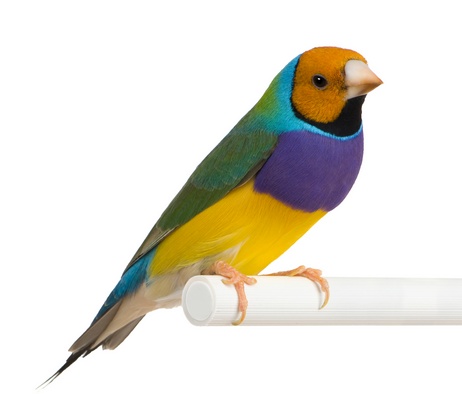REBECCA MARGISON, AVIAN PROTECTION SOCIETY & DENISE KELLY, AVIAN WELFARE COALITION
If you’ve made the difficult and often painful decision to place your exotic bird in another home, you’re probably looking for some information on the steps you should now take to ensure your bird goes to thebestpossible home
.
Hopefully you have examined all other options besides placement, including consulting with a competent avian specialist experienced in bird care and behavior, learning to change your own routines to accommodate those of a bird, seeking out the advice of bird clubs and avian rescue organizations, etc. If, after all of this research, you have decided that it still would be best for the bird to go to another home, you have a few options.
Placing Your Bird with an Avian Rescue Organization
There are approximately 100 formal avian rescue groups in the United States, with many more cropping up as more and more birds are displaced. Some of these groups will adopt your bird out to a new home, and some will keep the bird in a sanctuary setting. It’s important to research avian rescue groups to ensure that your bird is going to the best environment possible. Check out Guidestar: The National Database of Non-profit Organizations to get information on non-profit avian rescue groups.
Good avian rescue organizations with the highest standards of care will meet the following criteria:
- The group will either require proof that your bird is in good health (through veterinary reports) or they will provide veterinary testing for your bird immediately upon arrival.
- The group will quarantine your bird for a time period of generally 30–90 days.
- The group will feed the birds in their care a varied, healthy, and fresh diet.
- The facilities that the birds are housed in will be cleaned regularly, and spacious enough to allow them daily exercise.
- If the group adopts birds out, they will screen potential adopters very carefully to ensure all birds go to loving homes where the bird will thrive. The group will follow up with adopters to ensure all adopted birds are thriving.
- The group will care for all birds based on the birds’ individual needs and not based on what is most convenient for them, concerning flight, social and intellectual needs, and daily biological rhythms.
- The group will never breed birds or allow birds to be placed into homes where they will be bred.
- The group will provide educational resources on the proper care and treatment of birds. The group will provide supportive follow up care to adopters.
- If the group adopts out birds, they will always use legally binding contracts to ensure the bird can be recovered if improper treatment is discovered in the adoptive home.
- Having non-profit status can help you to identify good rescue groups; however, there are many groups without non-profit status that are still good, and having the non-profit status doesn’t necessarily mean a group is ethical. If a group is non-profit, request a copy of its financial statement and information on its board of directors.
- The rescue group should have long-range plans to provide consistent, quality care, housing, and staffing.
- Unless your situation is an absolute emergency, the group should try to work with you to solve any problems first before the bird is to be relinquished.
- If the rescue group cannot accept any birds at the time, they should refer you to another reputable rescue group for assistance. Rescue groups should not refuse birds based on their size and species. This could indicate that they may be looking to acquire larger birds simply to sell or adopt them out at higher fees.
- Be very wary of rescue groups that charge near market-value adoption fees for birds. Not all groups charge adoption fees, but those that do often only charge for the cost of veterinary testing and treatment, food, caging, toys, and other necessities. These can easily be documented with receipts.
- Some avian rescue groups are even becoming accredited by the few animal rescue and sanctuary accrediting organizations, such as The Association of Sanctuaries (TAOS) and the American Sanctuary Associations (ASA). Check to see if your rescue group is accredited.
Placing Your Bird Directly Into a Private Home
You also have the option of bypassing the rescue organization and placing your bird directly into a private home. Unless you know someone well, it can be difficult to judge someone’s ability to properly care for your bird. So how do you find someone willing and able to give your bird the best possible home?
Dos and Don’ts of Placing Your Bird in a Private Home
Don’t:
- Don’t place an ad on the internet or in the newspaper. There are many unscrupulous people who look to buy or adopt birds so they can turn around and sell them who often respond to these kinds of ads. People who are interested in breeding may also search ads like this for “breeding stock.”
- Don’t place your bird with a breeder or with someone interested in breeding birds. Placing a bird with a breeder results in more baby birds for the pet trade, and therefore contributes to overpopulation. If you have a rare or endangered species, contact a conservation group or zoological society to ensure that the bird is placed in a bona fide conservation program.
Do:
- Do contact avian veterinarians and reputable bird clubs to find knowledgeable people who could adopt your bird.
- Do thoroughly screen any potential adopters.
- Do have your adopter sign a legally binding agreement that includes your wishes for the bird.
Screening Potential Adopters
It’s often difficult to know what to look for in a potential adopter. This is a vitally important part of the adoption process; you want your bird to be happy, healthy, and safe. When choosing an adoptive home for your bird, look for the following:
- An adopter who is open and willing to discuss — and honor — your wishes for the bird.
- Someone who you feel will always do what is best for your bird, basing care and treatment on the bird’s individual needs, not on what is most convenient for them.
- Someone who owns their own home. Landlords often do not allow pets, or at least pets that will disturb the neighbors or damage property. When choosing an adopter who rents, be sure to get something in writing from the landlord stating it is ok for the tenant to have this particular species of bird in the apartment. Be sure the landlord is aware of noise levels and possible destruction of property that can be caused by the bird.
- Someone who is old enough to properly care for your bird for the rest of the bird’s life. If adopting a young bird to an older person, be sure they have made provisions for the bird should the bird outlive them.
- Someone without other dangerous animals around. Cats and ferrets, in general, should be avoided, due to their predatory instincts. Other animals, such as large reptiles, some species of dogs, and even other aggressive birds, can also be dangerous.
- Someone with a stable source of income. Birds are expensive, and should an adopter become unemployed, it may be the bird who suffers the most.
- Someone with excellent knowledge of exotic birds in general, and knowledge specific to the species of bird that is being adopted. If the potential adopter has birds, all birds in the home should be healthy (request vet records).
- Someone you are confident will house, feed, and care for the bird properly, and provide routine veterinary care. Getting references from a current avian vet can often help put your mind at ease.
- Someone without many life changes ahead of them. This could exclude many young adults who may still get married, have children, get divorced, and/or relocate several times before settling down. Birds can suffer and lose their homes when their caretakers experience changes such as these.
- Someone who will include the entire household in caring for the new bird. You should be aware of everyone in the household and know their feelings about the potential adoption. If even one family member is not supportive, your bird could suffer because of it.
- An environment where your bird will not be left alone for longer than she is used to, or for long hours at a time.
- Someone who will allow you to come and visit the bird periodically, if you choose, to check on her level of care and comfort in the home.
- Someone who will agree to sign a legally binding contract with terms and conditions that you are comfortable with.
- Someone who does not breed birds or other animals or have any interest in breeding.
- A home that your bird is comfortable in. Be sure to have the prospective adopter handle your bird to gauge her level of comfort with this new person.
- Someone who can give you references, like neighbors, family members, veterinarians, business contacts, etc. Utilize a firm that specializes in background verification, such as US SEARCH.
Remember that research is the biggest part of the adoption process. You must research the adoption or sanctuary organization if you plan to entrust the care of your bird to them. You must research individuals interested in adopting your bird to be sure your bird will be happy, healthy, and safe.
Placing your bird into a new home can be difficult, frustrating, confusing, and emotionally painful. Hopefully, with these guidelines, you are now better equipped to find the best possible living environment for your captive exotic bird.



